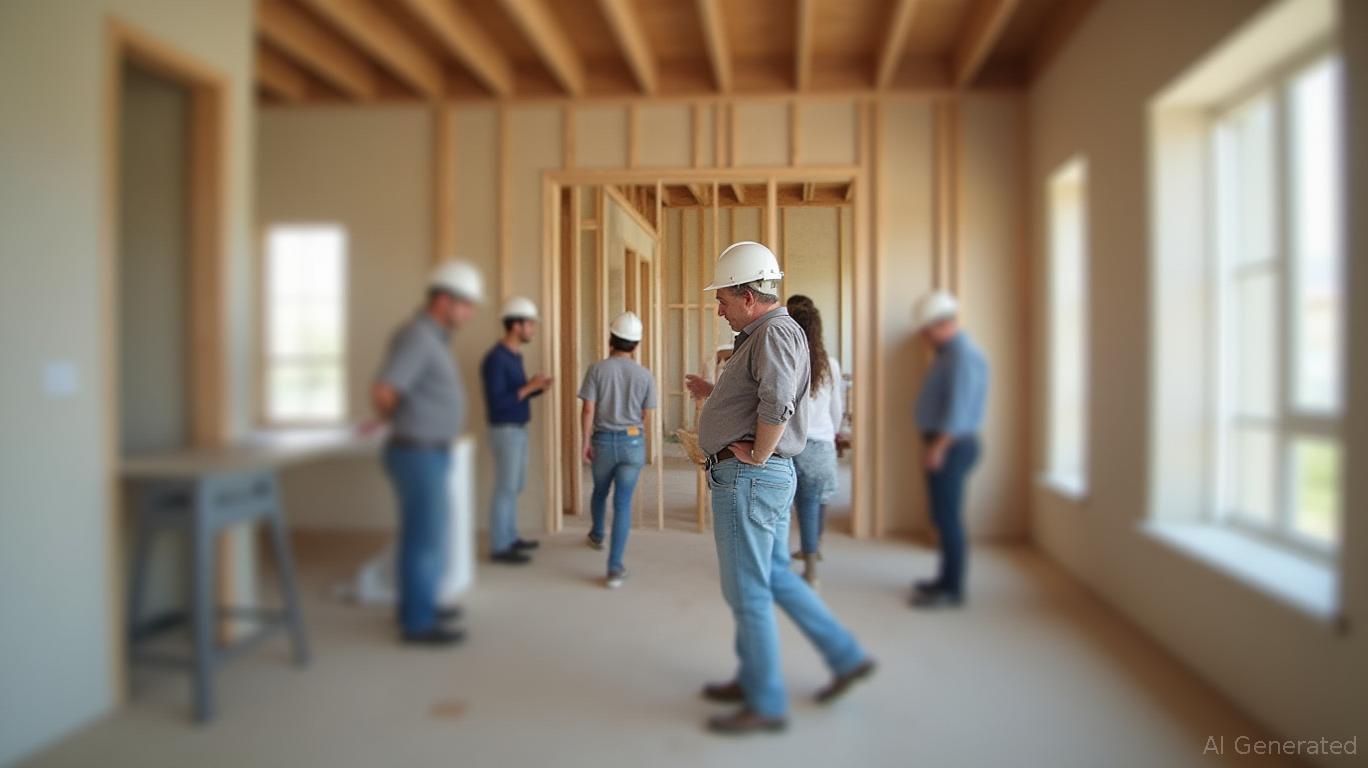KB Home's Revenue Targets in 2025: Navigating Soft Demand with Strategic Pricing Adjustments
KB Home (KBH) has lowered its 2025 revenue guidance to $6.3–$6.5 billion amid a challenging housing market, but the company's Q2 2025 results reveal a nuanced picture of resilience. While the housing sector faces headwinds from elevated mortgage rates and weak consumer sentiment, KB Home's focus on operational discipline, price adjustments, and built-to-order strategies offers clues about the sustainability of its targets—and the broader health of the U.S. housing market.
Financial Performance: Cost Management Shields Profitability
KB Home's Q2 results included an EPS of $1.50, slightly exceeding forecasts, driven by strict cost controls and operational efficiency. Gross margins held steady at 19.3% (adjusted to 19.7% excluding inventory charges), while SG&A expenses dipped to 10.7% of revenue—a sign of leaner operations. The company's homebuilding operating income reached $131 million, or 9% of revenue, underscoring its ability to protect profitability even as housing starts and sales volumes lag.

Strategic Adjustments: Built-to-Order and Price Flexibility
The cornerstone of KB Home's strategy remains its built-to-order model, which now accounts for 70–75% of its business. This approach reduces inventory risk and aligns supply with demand. Improved build times—now 140 days, down 20% year-over-year—add further efficiency, returning to pre-pandemic levels. Direct costs for homes started in Q2 fell 3.2% year-over-year, reflecting better material sourcing and labor management.
Price adjustments in underperforming markets, such as Sacramento and Seattle, are another key lever. By repositioning pricing to match regional demand,
aims to maintain sales velocity without sacrificing margins. CEO Jeff Mezger emphasized the company's “flexibility to adjust pricing and optimize community performance,” a critical tactic in a fragmented market.
Market Challenges: Soft Demand and Regional Disparities
The housing market's struggles are well-documented: mortgage rates near 7%, declining buyer confidence, and uneven regional performance. KB Home's lowered guidance reflects these realities, as deliveries are now projected at 13,200 homes for the year—down slightly from earlier expectations.
Notably, KB Home's management is not relying solely on volume growth. Instead, they're focusing on higher-margin markets like Las Vegas and Texas, where demand remains stronger. The company also canceled land contracts for 9,700 lots, prioritizing capital preservation over speculative land investments. This cautious approach aligns with its liquidity position of $1.2 billion, including a revolving credit facility, which provides a buffer against further market downturns.
Risks and Long-Term Outlook
The near-term risks are clear. Pricing pressures and regional mix shifts could further compress margins, while geopolitical risks and economic uncertainty loom. However, KB Home's long-term optimism is grounded in fundamentals: a persistent undersupply of homes and favorable demographics. The company's goal to return to a 70–75% built-to-order mix and its aggressive share repurchase program (targeting $200–$300 million in H2 2025) signal confidence in its model's durability.
Implications for Housing Market Resilience
KB Home's strategies highlight a broader truth about the housing sector's resilience: adaptability matters. Companies that can pivot pricing, streamline operations, and avoid overextending on land will outperform. KB Home's focus on liquidity, cost discipline, and customer-centric models suggests the sector is not uniformly collapsing—select players are weathering the storm.
Investment Considerations
For investors, KB Home's shares now present a mixed picture. The stock's 3% post-earnings rise to $51.97 reflects short-term confidence in its operational execution, but the lowered guidance and soft demand could keep pressure on valuations.
Key Takeaways for Investors:
1. Hold for now: KB Home's strong balance sheet and disciplined capital allocation justify a “hold” rating, but avoid aggressive long positions until demand stabilizes.
2. Watch margins: Slight margin declines are anticipated, but a drop below 19% could signal deeper issues.
3. Regional performance: Outperformance in Texas and Las Vegas could provide a floor for deliveries and sentiment.
Conclusion
KB Home's 2025 revenue targets are achievable but hinge on executing strategic price adjustments and maintaining operational excellence. While the housing market's near-term outlook is clouded, KB Home's adaptability offers a blueprint for resilience. Investors should view the stock as a defensive play in the sector, with upside potential if mortgage rates retreat or demand rebounds. For now, the focus remains on navigating—not conquering—the soft demand landscape.

Comments
No comments yet